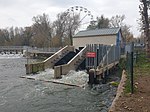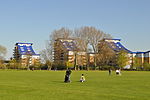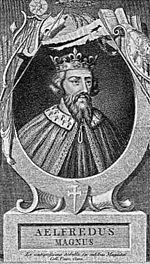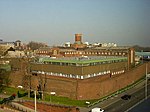View Island

View Island is a small island near Caversham Lock, on the River Thames at Reading, Berkshire in England.View Island forms part of a series of riverside open spaces, managed by Reading Borough Council, that stretch along one or other side of the River Thames throughout its passage through Reading. From west to east these are Thameside Promenade, Caversham Court, Christchurch Meadows, Hills Meadow, View Island and King's Meadow.The island was a derelict boatyard when Reading Borough Council took it over in 1998 and restored it. It is a quiet, relaxing island with grassy paths and seating. It is set out as a small park containing several wooden chain-saw carved sculptures, although all but one having rotted away. It connects to Caversham via Heron Island, which has private riverside housing and is connected by road to Lower Caversham.A body was found on View Island in February 2011.In 2021, the new Reading Hydro community owned hydro-electric power plant opened at the upstream end of the island. At the same time a new and more natural fish pass stream was constructed, snaking through View Island.
Excerpt from the Wikipedia article View Island (License: CC BY-SA 3.0, Authors, Images).View Island
Heron Island, Reading Caversham
Geographical coordinates (GPS) Address Website External links Nearby Places Show on map
Geographical coordinates (GPS)
| Latitude | Longitude |
|---|---|
| N 51.462 ° | E -0.963 ° |
Address
View Island
Heron Island
RG4 8DQ Reading, Caversham
England, United Kingdom
Open on Google Maps









